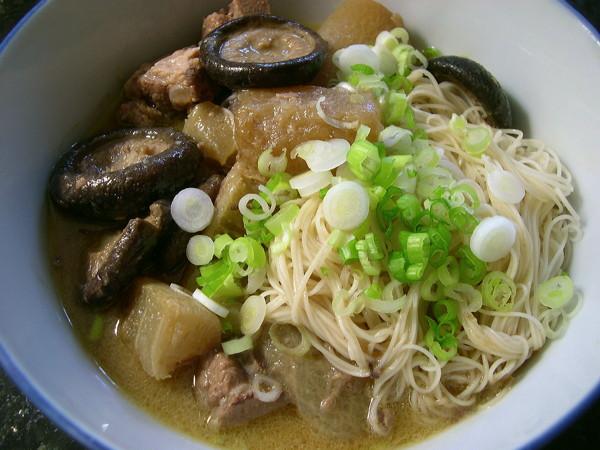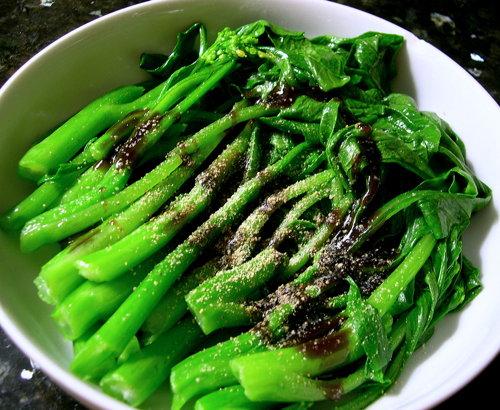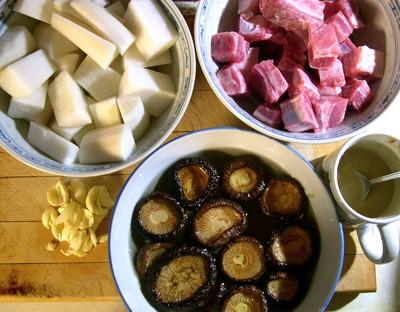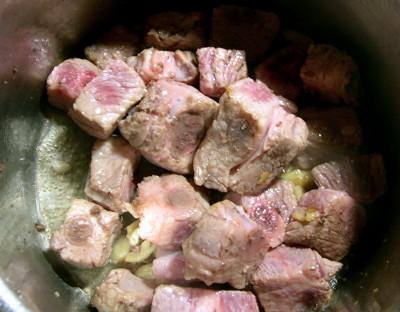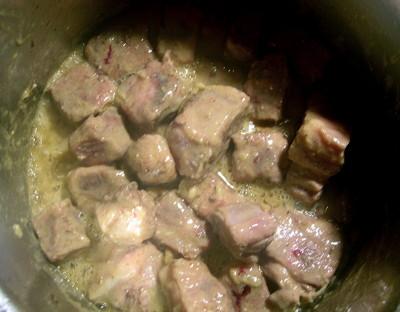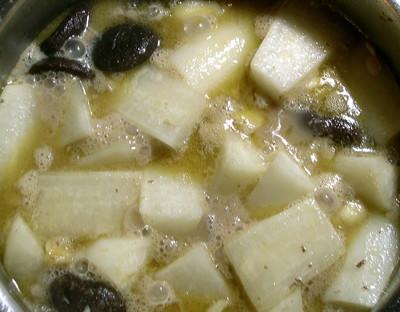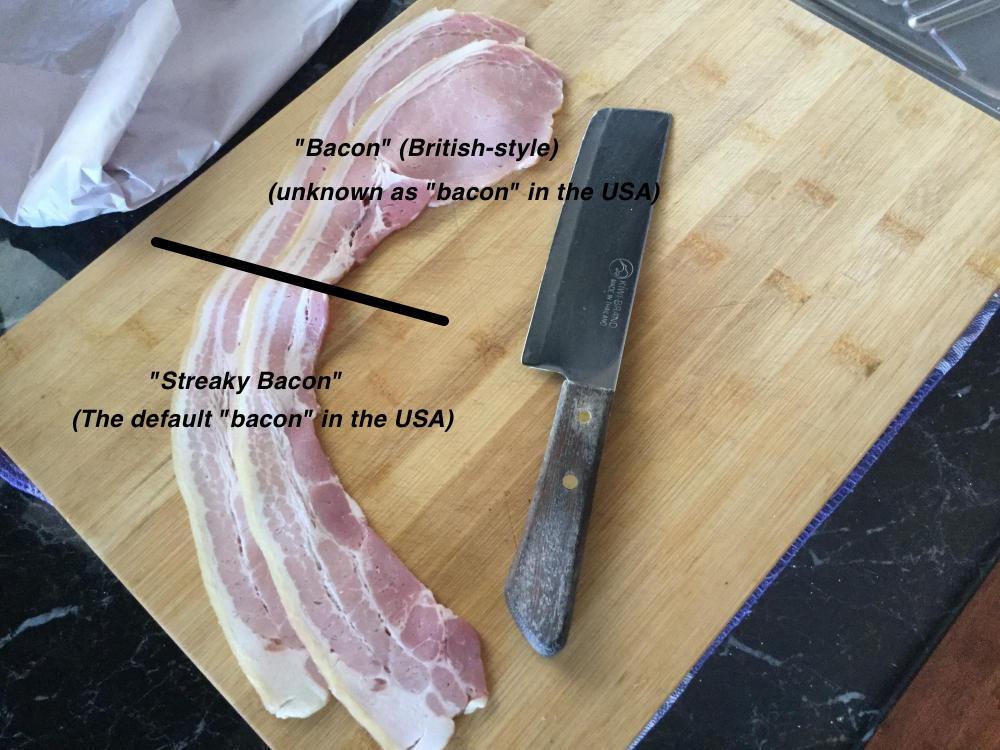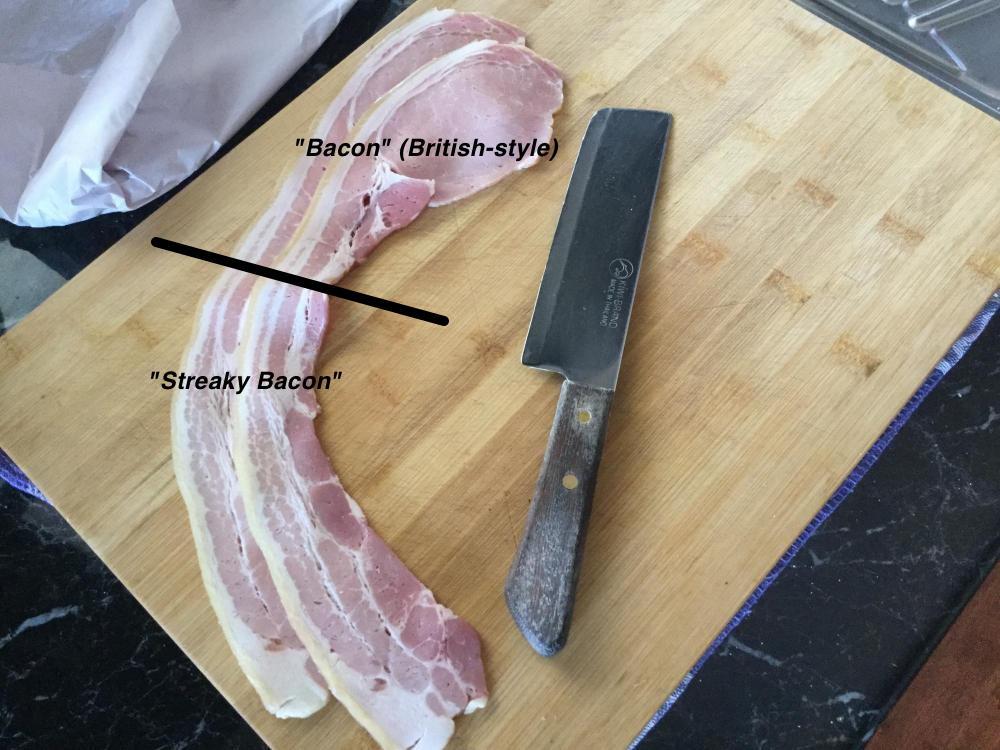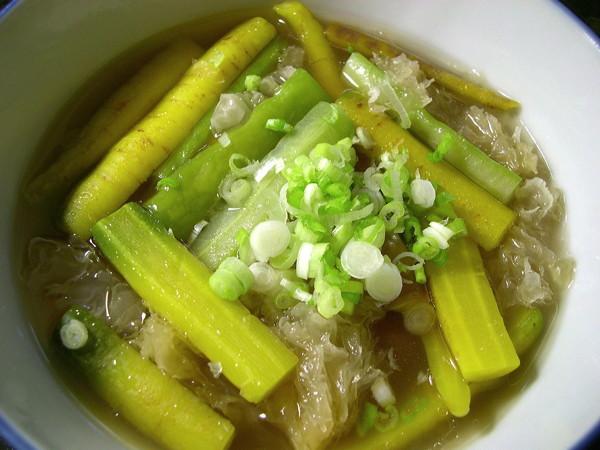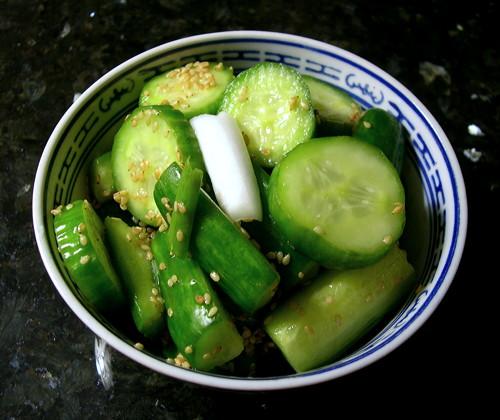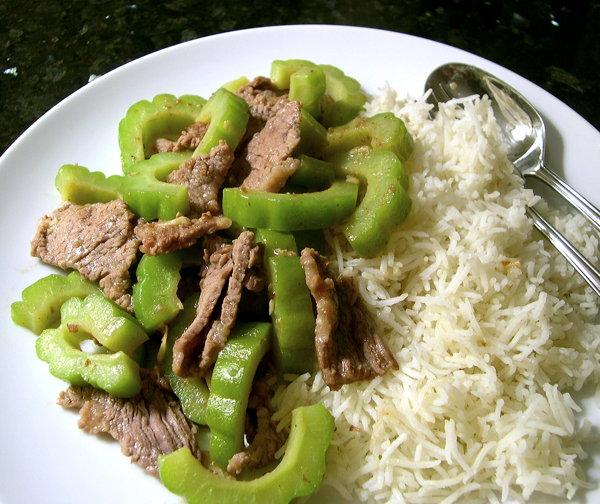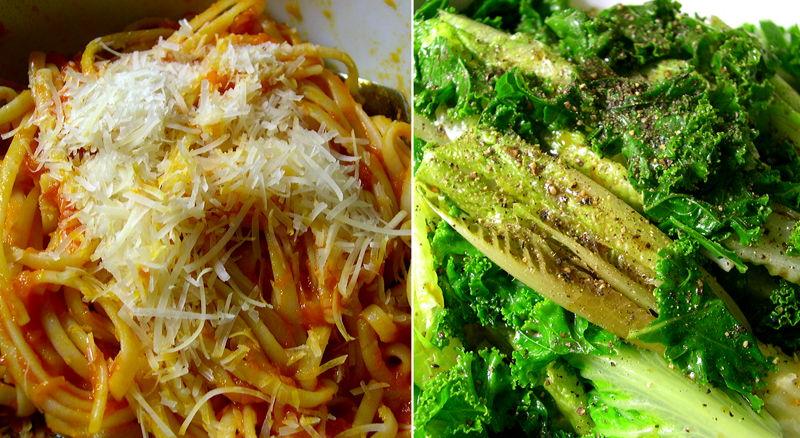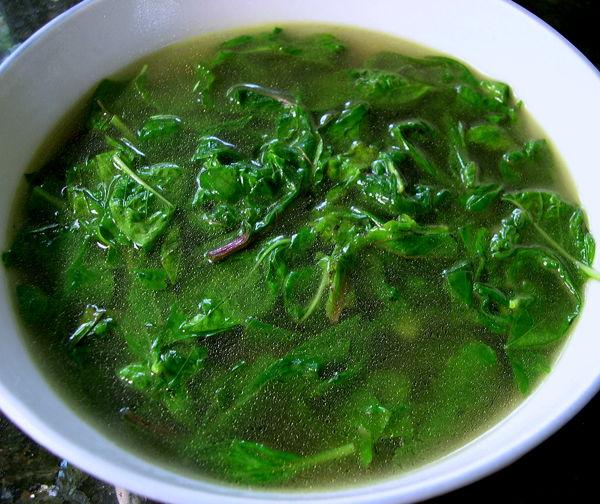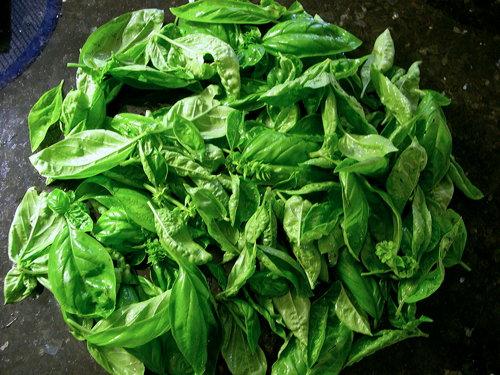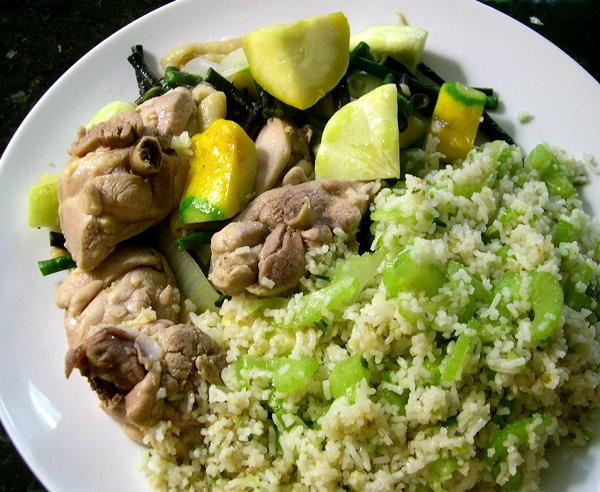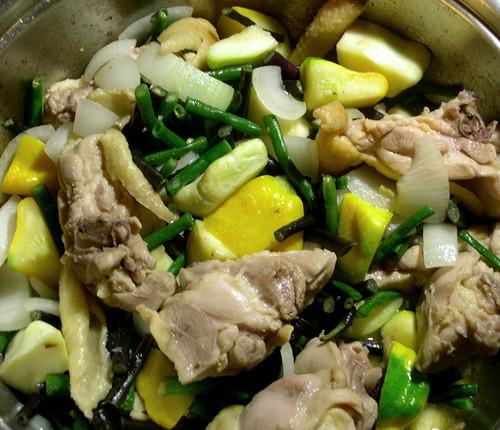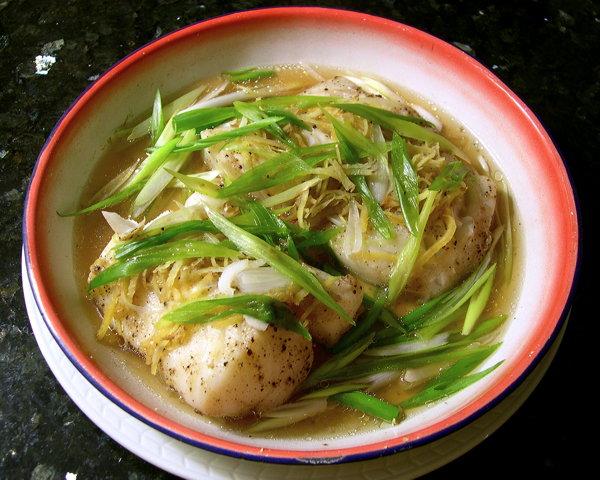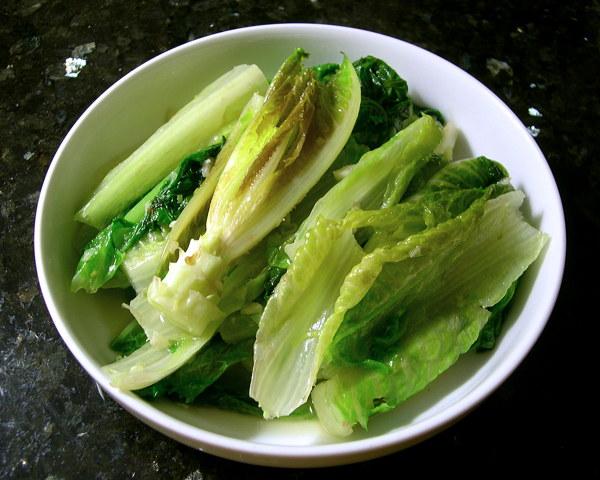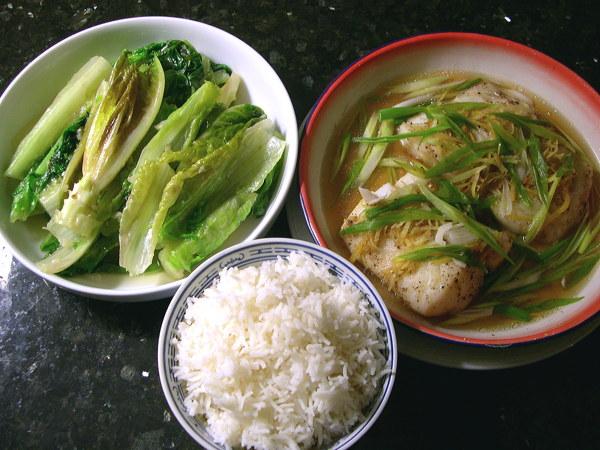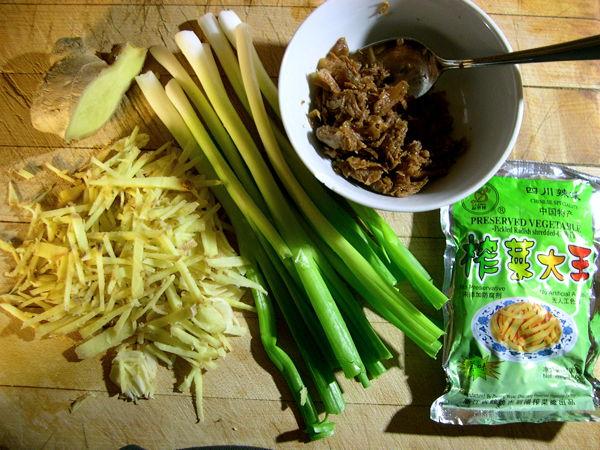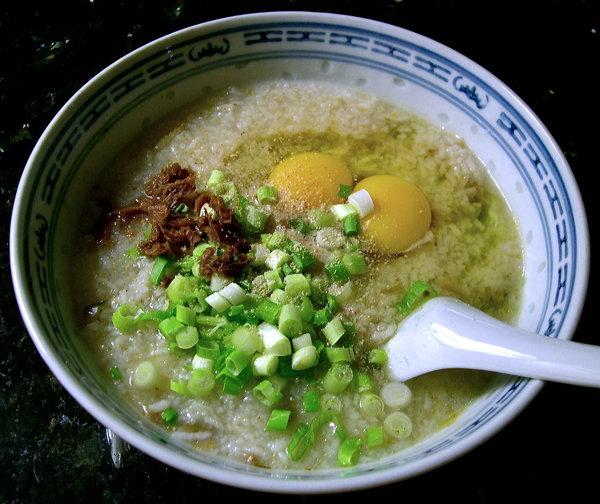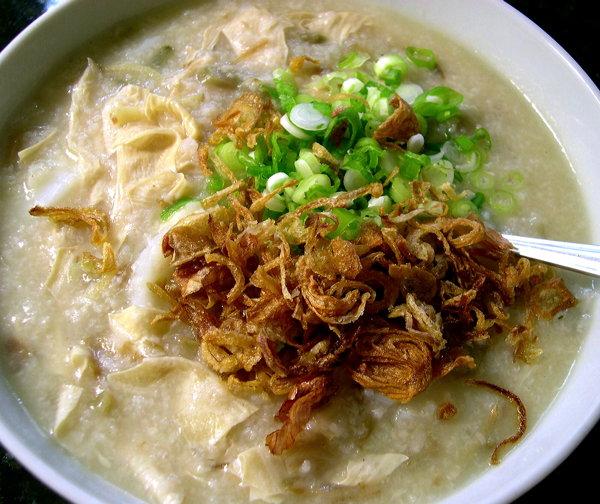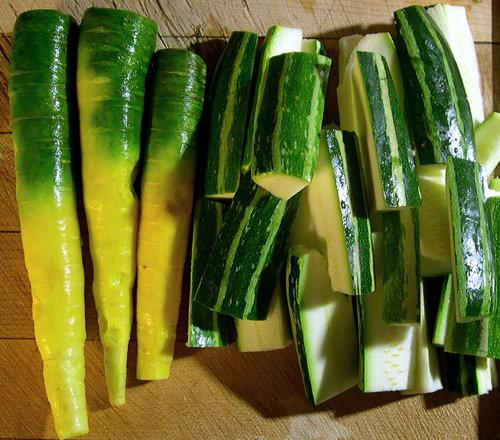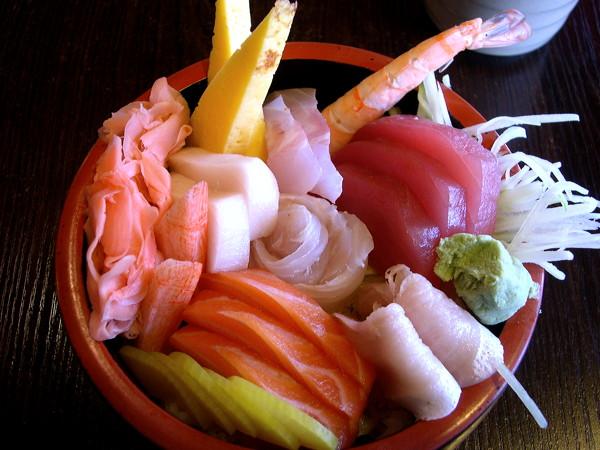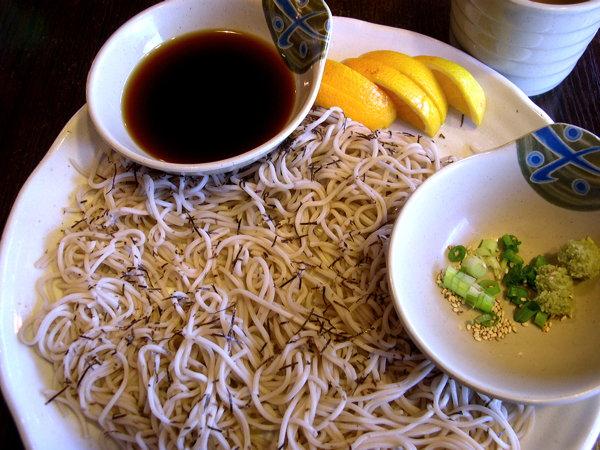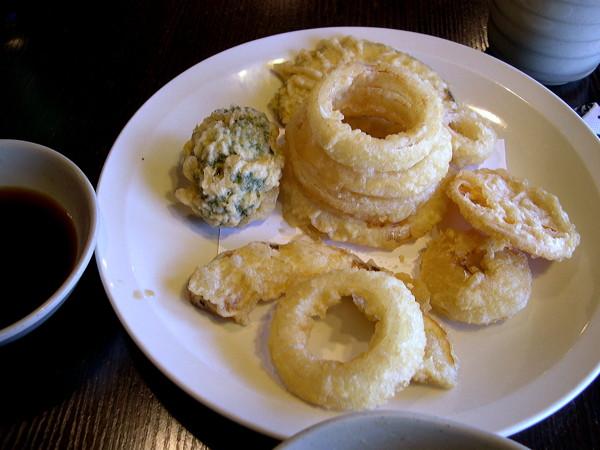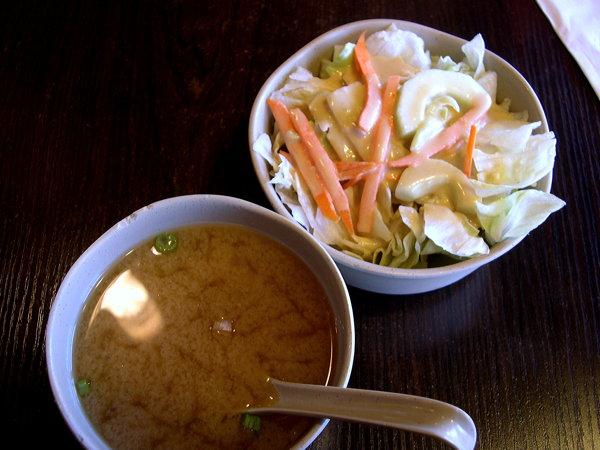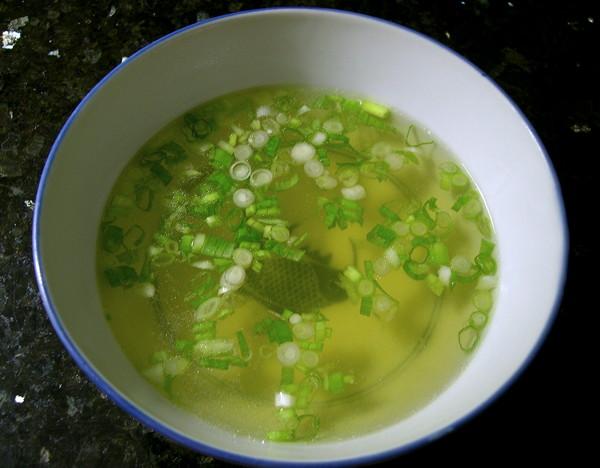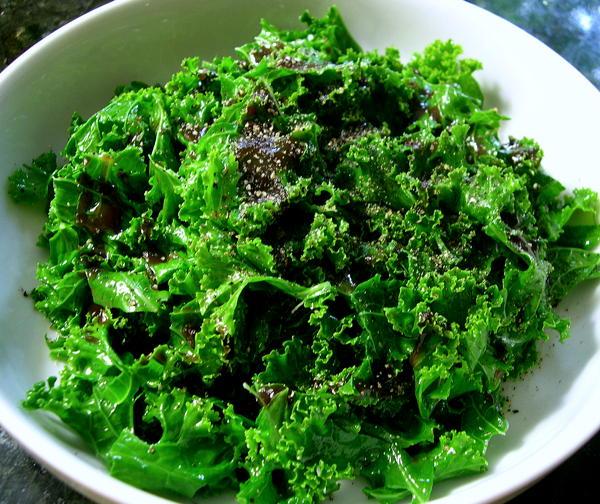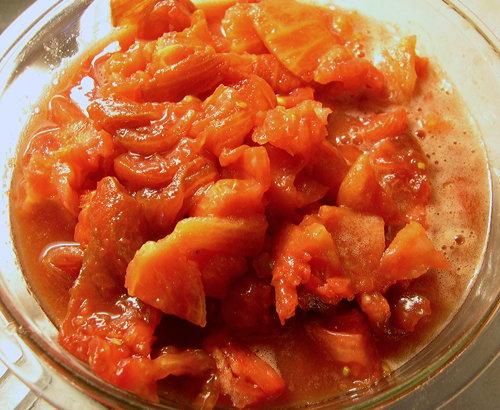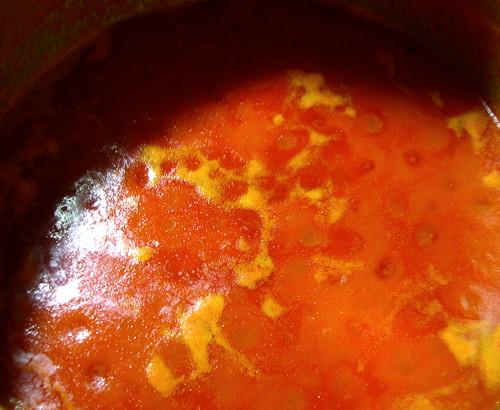-
Posts
3,810 -
Joined
-
Last visited
Content Type
Profiles
Forums
Store
Help Articles
Everything posted by huiray
-
-

Indianapolis Restaurant: Reviews & Recommendations
huiray replied to a topic in The Heartland: Dining
I should add that excellent Chinese food of the many and varied regionalities grew and took hold on the West Coast of North America (the SGV & Vancouver in particular) or in other places such as Richmond Hill/Markham in the GTA, because of the immigration of Chinese folks with money who demanded good Chinese food and were willing to pay for it. NYC, not so much - or at least not to the same extent, even though NJ has an increasing highly-educated and well-paid Chinese presence but which is more diffuse - which is why NYC was supplanted by the SGV (within the USA), for example, decades ago, for excellent Chinese food. -
Pork spare ribs slow-stewed w/ daikon & mushrooms. With rice. Plus yu choy sum. Blanched in oiled simmering water then dressed w/ oyster sauce & white pepper. On the way to the final pot of stew. Ingredients included garlic, peeled & sliced daikon, short-cut pork spare ribs, fermented beancurd – white [Liu Ma Kee] plus chillied [Korika] slurried w/ some water. Dashes of this-and-that also went in. Finished stew was left to meld-in further for several hours before re-heating.
-
The dominance of pork belly as the basis of "bacon" in the USA is such that even in my favorite charcuterie (Goose the Market) here in Indy, a place which carries a wide range of foodstuffs from hither and yon as well as the excellent stuff produced by their sister-shop Smoking Goose, my asking about bacon where there is this "largish blob of not-fat-streaked lean at one end" is met with either blank stares or incomprehension or the occasional murmur of something like having heard of this "thing".
-
Heh. I'll go a little further and add to my annotations of that photo --- Haha. Thanks to sartoric for the original. :-) And...here's the Google image set for "peameal bacon".
-
Here's an annotated version of sartoric's picture showing my understanding of "streaky bacon" and "bacon" in the context of my post above:
-
When I was growing up "bacon" to me ALWAYS meant the stuff with a large sort-of-circular piece of meat at one end and some narrow fat-streaked meat at the other end. That is, British-style "bacon". With or without the rind on top. But then, I grew up in a British-influenced place. When I was in the UK "bacon" still meant the one I described, naturally. I encountered what was (IIRC) called "streaky bacon" here and there, what I later learned was the default meaning of "bacon" in the USA, which I also learned later was made from pork belly. During my youth and while in the UK "bacon and eggs" ALWAYS meant the kind of bacon with the loin piece at one end together with fried eggs, usually in what is known here in the USA as "sunny-side-up". It wasn't until I crossed the Atlantic that I learned that "bacon" was this strange stuff with streaky layered fat and lean, no largish blob of not-fat-streaked lean at one end, and that MOST of the folks here had never seen or heard of "bacon" with this blob of non-fat-streaked lean at one end. ETA: Then, when I lived in Canada for a few years, I learned about "Canadian bacon" and "pea meal bacon" (although purists would fulminate about those terms) and was an observer of purchases of whole pieces of such by the sister of my companion at the time, from pubs and other places which appeared to be places which made really good versions of said meat products; and eater of dishes made with those large chunks of meat. :-)
-
Soup. Chicken stock, water, yellow & red carrots, bittergourd, rehydrated snow fungus. Scallions. Mei fun w/ stuff. Hot oil, garlic, sliced pre-prepped winter-type bamboo shoots, a can of curry Cha'i-Pow-Yü (this one)(back view), firm tofu chunks, seasoning adjusted. Scallions. Plus quick-pickle cucumbers. Sliced Persian cucumbers salted for a little while, rinsed & drained, then pickled w/ aged rice vinegar, hon-mirin, sugar, sea salt, scallions, toasted sesame seeds.
- 475 replies
-
- 11
-

-
@Bhukhhad, where are you actually located? I've asked you this before, but you declined to answer. I am wondering anew, because you talk about how hard it is for your friends and family to give up meat. Yet my understanding is if you were actually living in the Indian sub-continent vegetarian dietary culture would be unremarkable and very widespread, even if it is not so for you and the folks around you.
-
I often have meatless meals and have posted MANY of them here on eG. There are too many to list in this thread, but here is one I posted just yesterday. Here's the post previous to that where, except for the chicken stock for the soup, everything else was meatless. And so on and so forth. Can't say I feel the need for a "name" for them. :-) They are just "meals", and the great majority of them are NOT salads but, rather, cooked meals. Even stir-fried lettuces, in the Chinese manner (YUM!). Have a look at my posts on the dining/meal threads. ;-) It is true that on eGullet, meat-eating appears to be very dominant and meatless meals tend to be somewhat disdained by many. For myself, like for many who eat a lot of E/SE Asian food, the absence of meat and/or sparing use of meat is unremarkable and common. Fish, which I believe is not considered "meat" by most folks here (and by the category known as Pescatarians in the West) is more common in E/SE Asian diets. As for fresh sprouts (mung beans or soy beans are the most common) - I assume folks know these things are available in great quantities in E/SE Asian groceries. (The aged, packaged-far-in-the-past stuff in sealed plastic packages in the "Organic" sections in standard Western supermarkets are too dreadful for words in most cases)
-
Chicken soup. The last part of the decant from a new batch of chicken stock; plus some retrieved skin & meat, and chopped scallions & some Maldon salt. Stir-fried beef & bittergourd. White rice. Sliced brisket marinated w/ Shaohsing wine plus some salt, oil, corn starch. Stir-fried w/ garlic & rice bran oil, and sliced cored/de-seeded young bittergourd. Some sugar. Water.
- 475 replies
-
- 13
-

-
- 475 replies
-
- 12
-

-

Indianapolis Restaurant: Reviews & Recommendations
huiray replied to a topic in The Heartland: Dining
Haha! Yes, if it were spoiled, for example, it would have promptly come out of my mouth and I would have done more than just murmur to the chef that it could have been better. :-) Thank you for the compliments. -

Indianapolis Restaurant: Reviews & Recommendations
huiray replied to a topic in The Heartland: Dining
I wouldn't say it was a waste of time and money. Rather, that it was less than what I would have liked for the money. The tempura was not particularly memorable - somewhat tasteless though crunchy - but the biggest objection was that it was almost entirely just onion rings. Not what is expected in JAPANESE tempura. Sorry if the zaru image set did not indicate that I expected soba on a bamboo mat, since they called it "zaru soba" - I believe the images did show that, though. The shrimp wasn't BAD bad, nor exactly inedible, but it was not a nice shrimp. It wasn't spoiled, but I expected better. "Expensive" depends on one's perspective and what the food/cuisine is. In this regard, Japanese food always costs more anyway, by comparison to something like "Chinese" (in the USA) which tends to be thought of as CHEAP food. This latter point is something that has skewed USAmericans' false perceptions of what "Chinese food" is supposed to be - something that is CHEAP - and which has been largely responsible for the difficulty high-end Chinese food (and expensive food) has had in gaining an audience in the USA amongst non-Chinese folks. In contrast, people here seem to accept that good Japanese food will ALWAYS be expensive, which is true because the quality of the ingredients will need to be top-notch, but that seems to be accepted. Whereas Chinese food that costs as much as (or more) than Japanese food seems to be rejected by the masses here in the USA. Even in NYC for years and years restauranteurs who thought about opening up a high-end Chinese restaurant failed to do so because their market analyses (IIRC) indicated that people would not pay the money for such high-end food. If one had a top-notch Cantonese meal in Hong Kong or even in SE Asia with high-quality ingredients and fresh fish etc the price of it would astound folks here used to Chinese Take-Out with lo-mein at $5.99 or whatever. I would also murmur that one's being able to cook and having access to good ingredients should not disbar one from dining out. ;-) -
Dried cordyceps. Chili peppers.
-
Soup. Chicken stock, rendered chicken fat, water, basil, beet greens. Beet greens were from a bunch of Chioggia beets [Silverthorn Farm]. Trimmed & washed basil. From my deck. Yes, the flowers that were left on the basil went into the soup. Chicken stir-fry w/ fried rice. Hot oil, chopped smashed garlic, chopped-up local chicken thighs, salt, cut-up pattypan squashes & green+purple yard-long beans [both Farming Engineers], hon-mirin [Takara], cut-up Vidalia onion, this-and-that. Hot oil, chopped scallions (lots), chopped de-stringed celery, 2-day-old white rice, salt. Chicken & stuff in the pan.
-
- 475 replies
-
- 11
-

-
Tong Ho (茼蒿) in chicken stock/broth. Rice congee with stuff. On the way there... Ginger, garlic, scallions, Tianjin Preserved Vegetable (天津冬菜; "tung choy"; Jyutping tin1 zeon1 dung1 coi3), "shredded pickled radish"/pickled mustard stem (榨菜; "char choy"; Jyutping zaa3 coi3). The congee was made with the ginger & garlic sautéed in oil, water added, most of the tung choy, all of the packet of char choy, long grain rice; and seasoning adjusted. A bowl of the congee w/ a couple of raw eggs [Royer & Riehl Family Farms], some tung choy, chopped scallions. and white pepper. The eggs are broken up and folded into the hot congee with the other toppings. More of the congee re-simmered w/ oiled dried beancurd sheets (腐竹; "fu chook" (in the sheet form; like this one); Jyutping fu6 zuk1) for a bit, seasoning adjusted, then fresh wild-caught cod slices folded in gently right at the end and the heat shut off. Bowled, topped w/ chopped scallions, deep-fried shallots/"red onions".
- 475 replies
-
- 13
-

-
Soup. Chicken stock (see here), extra rendered chicken fat & rendering scraps in pot, some extra water, some Maldon salt, half an onion [Fields Farm Fresh (their move)], green-shouldered yellow carrots [Silverthorn Farm], cocozelle zucchini [Full Hand Farm], minced pork [Kincaid's Meat Market], lots of basil [Silverthorn Farm] at the end. The carrots & already-sliced zucchini.
-

Indianapolis Restaurant: Reviews & Recommendations
huiray replied to a topic in The Heartland: Dining
Aha. Do you need the cheese to be melted? -

Indianapolis Restaurant: Reviews & Recommendations
huiray replied to a topic in The Heartland: Dining
Lunch at Sushi Bar in Broad Ripple. Complementary salad and soup. Pretty standard and ho-hum. Vegetable tempura. Mostly onion rings, one lonely piece of broccoli and a couple slices of yam. Crunchy enough but pretty forgettable. The dipping shoyu was mainly just salty. "Zaru Soba", served sans zaru and on a plate (with orange slices???). Huh. Not the best quality soba. The orange slices got promptly tossed overboard. Also, why call it Zaru Soba - it would be better listed simply as "Cold Soba Noodles". Again, the shoyu lacked ...something. Chirashi. Not on the menu, but by "request". A simple, standard item that requires no additional cooking on the part of the chefs, simply assembly of the components that they would already have at their bar. Will reflect the quality of the components. The cooked shrimp was...not very good...I set it aside after a bite. The fish was...OK but just that. (Well, I will allow it was a Monday) I walked up to the sushi counter (as the waitress finally noticed I wanted to leave and scrambled to get me my bill) and mentioned to the "chef" standing there at his station my comments about the "Zaru Soba" and the shrimp. He just stared at me and half-nodded with a blank half-smile. An ostensible "Japanese" joint but really an Americanized Chinese place. Not cheap, even for "Japanese" food, considering the quality of the stuff served. My personal take, of course. I've dropped by here a few times over the years; I used to like the place but think I've become less and less interested in eating here. Mind you, perhaps their rolls (Fanciful Americanized sushi rolls seem to be dominant at this place) are great (I don't know) but I don't generally care for rolls and can't remember if I even had one of their rolls on a previous visit or not. Location on Google maps, with links thereof to photos of the outside and so on. -
A bowl of the latest batch of chicken stock, with some chopped scallions. Stock made as before, decanted through paper towels lining a metal sieve; with most of the fat retained by the paper towels (and allowed to drip through slowly afterwards into a bowl). Several rice-bowls-worth of the stock happily drunk straight away standing in the kitchen, getting sticky lips; one or two bowls w/ some retrieved skin and meat afterwards; and this bowl later after rewarming the filtered stock. I think I drank about half of the stock before putting the rest away. :-) I won't bother reducing the remainder of it and will just drink it up instead - oops, that means I need to make more real soon. :-D
-
A pasta dish. Spaghetti & linguine [Rustichella d'Abruzzo] w/ Hazan tomato sauce. Kale. Young kale [Nading Farm], de-ribbed, torn into pieces, blanched in the water after cooking the pasta, w/ some oil added; then dressed w/ Bulldog tonkatsu sauce & white pepper. The sauce in progress. Tomatoes [Van Antwerp Farm Market] blanched, skinned, cut in half/torn apart, deseeded; with liquids from forcing jelly through a metal sieve plus drippings. Cooking down, with added butter & Maldon salt, and after blitzing w/ a stick blender.
- 475 replies
-
- 14
-

-
@ElsieD, try the Indian shops in Ottawa too. I've seen candlenuts in Indian shops also. (They're also called "Indian Walnuts", BTW). They're also called "kemiri" in parts of Indonesia. ("Buah keras" is more Malay (also Peranakan))


